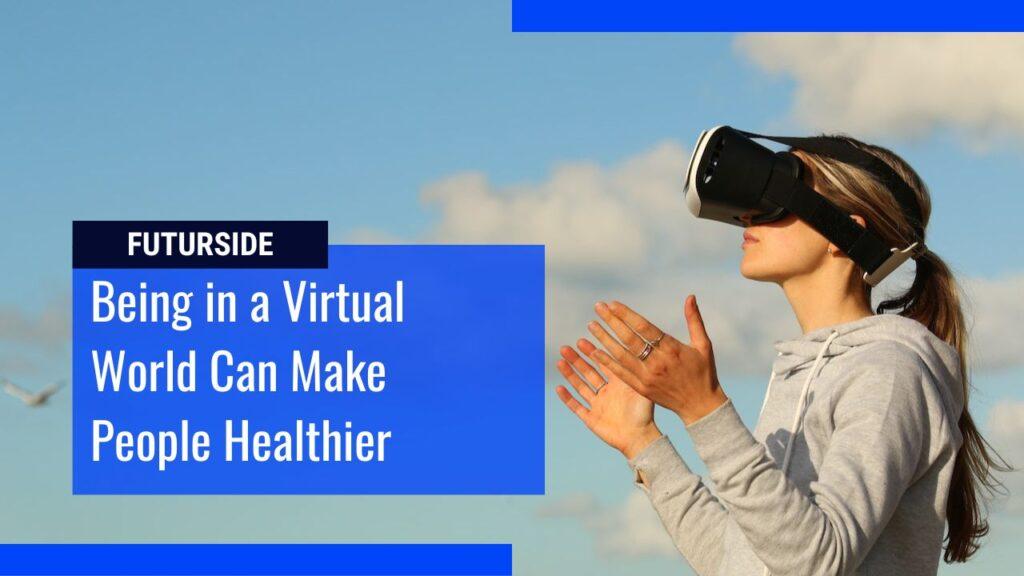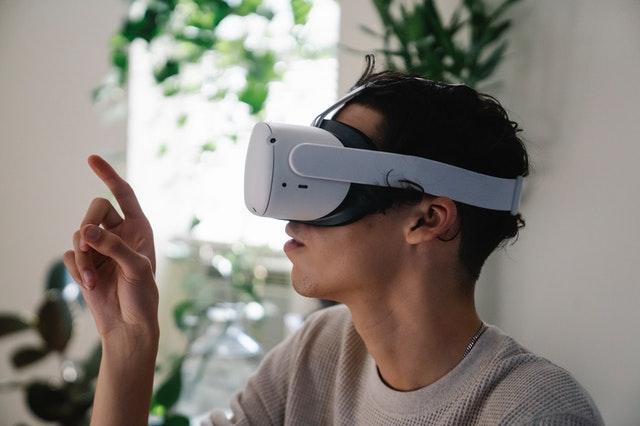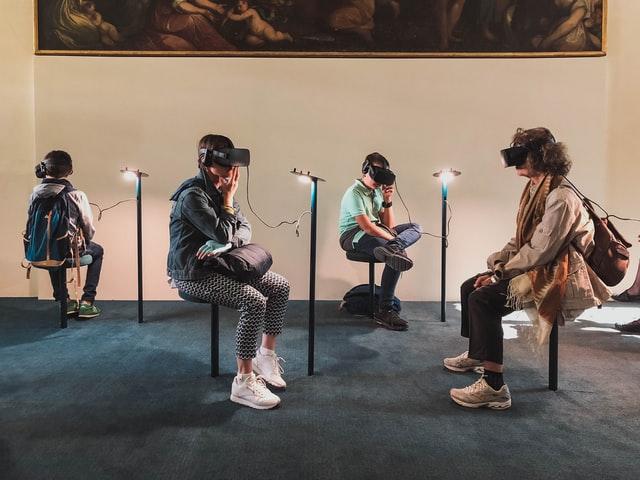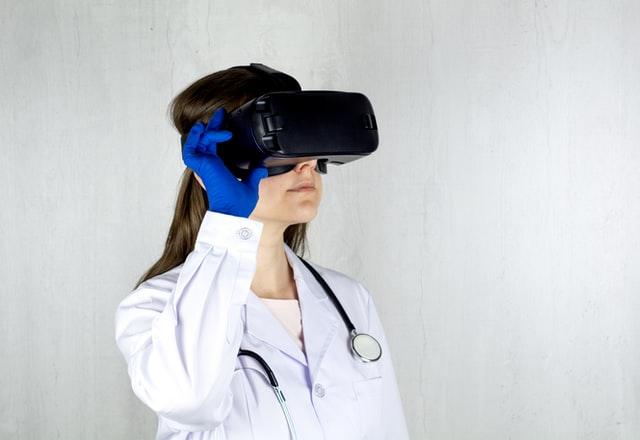Virtual Reality (VR) is a fully immersive computer-simulated environment that gives a user the feeling of being in that environment instead of the one they’re actually in. The idea is that it replaces your reality with something new. A computer-generated environment could be some game or environment you walk around or some video that is playing all around you.
The idea is to trick your brain into thinking that that’s your new realm. A lot of video games have already developed the technology to put users in an interactive world. They can be in a driver’s seat, on a battlefield in a first-person shooter or even in a town walking around. However, your perception of reality is not altered. You are simply a spectator overseeing the events that are happening in that world.

Contents
How does virtual reality work?
For your brain to perceive a virtual environment, there are a few key factors that are vital for the creation of an immersive experience. While there are different display methods, one of the most popular ways to experience VR is through a headset. Headset devices use stereoscopic displays to make what you see three-dimensional.
And it gives depth to the image that you’re looking at. Just like how our eyes see. However, the stereoscopic display does not make an immersive experience. The ability to track a user’s motion, particularly their head and eye movements, allows the image displayed in the headset to change with your perspective. So if you turn your head to the left, the display will render whatever is on your left in that environment.
Besides vision, certain VR experiences will also include other sensory stimulation like sound and even tactile feedback for touch. And to truly alter the perception of our reality, there has to be a certain level of Virtual Interactivity. True interactivity should allow a certain degree of user-controlled navigation. People should be able to walk forward, backward or turn through space in the virtual environment.
This way people don’t feel like they’re just watching an elaborate 3D movie. When we can freely move within that environment and even interact with things in it. Our brains can truly perceive that the world is real. VR has a lot of practical purposes outside of gaming and is used as training simulators for soldiers, pilots and doctors.
How does VR trick your brain?
VR communicates to your brain in a different way than just looking at a screen. When looking at a screen like our TV or phone, our brains read this as a flat image. In the same way, we would view a picture. If an object on a screen gets bigger or smaller or a person on TV moves toward the camera you don’t feel the need to take a step back or move out of their way.
But in VR you might want to because you’re not looking at one screen. You’re looking at two. And those two screens are right in front of your eyes. Projecting a slightly different image into each eye. Which is how our vision works in the real world. Each eye takes in stimuli from a slightly different vantage point. VR is a technology that creates a two-way interaction between the viewer and the immersive environment.

Head tracking allows a person in VR to look and move around a fake world in the same way we look and move around a real one. If you look left, you’ll see more of the world to your left. Other subtle effects make virtual spaces feel more real like 360 audio, which is a big part of the plank experience. As you turn your head the wind will subtly change. The plank creaks and if you listen closely a heartbeat slowly begins to speed up.
Our brain takes all these new, virtual stimuli and begins to believe that this is reality. What’s interesting about virtual reality, it is the first medium that is almost like a teleporter, it gives the ability to feel like you’re there in the real world when you’re not. Up until now, VR was only limited to computer games and simulation. Now the experience is so powerful that virtual reality is changing people’s lives.
How VR can make people healthier?
Until a few years ago, virtual reality appealed only to addicted video game players. Turns out it’s far more useful and revolutionary. In healthcare, surgeons and their assistants are now starting to wear VR goggles to visualize the best way to perform complex types of surgery.
Psychologists are using the technology as a therapy for patients with fear of heights, vertigo, anxiety disorders and post-traumatic stress disorder. Researchers at the University of Oxford are using VR to help patients with persecutory delusions.

Virtual reality is also helping some children manage autism. Both kids and adults use smartphones, computers, smartwatches, TVs and gaming technology daily and think nothing of it except that it’s a good time. Some kids and adults with autism who are minimally verbal or non-verbal use iPads and voice apps to speak for them and as an educational tool every day.
Hence by monitoring brain activity during a VR session, doctors can study the cognitive and social aspects of behavior in kids with and without autism. It can also help children with autism build social skills in school so that they can learn more easily and effectively.
A therapist can then help patients practice facial and body cues to overcome barriers in social interaction. In the future, this type of technology coupled with the experience accumulated by doctors and therapists over the decades might reduce the prevalence of psychological disorders by several orders of magnitude.
Virtual reality is likely to play a central role in assessment and treatment in the mental health centers of the future. This technology is also being used to reduce anxiety at the dentist’s office or while undergoing an MRI. It is also proving to be effective at stimulating motor functions for people with lesions in certain regions of the brain.
One of the most discussed benefits of virtual reality in the world is that it lets us experience new things without the risk of injury. It is used to simulate rollercoasters, skydiving and bungee jumping. But its benefits do not stop there. It can also be used for deceptive purposes. It can improve the quality of life of the elderly and less able.
Some equipment for VR is helping the less able live a better life. Many people are eager to use virtual reality technology in their daily lives. For those who cannot see well enough, the technology can help them get around in the real world. The movies made specifically for VR make it possible to see everything, creating a unique viewing experience that is more realistic.

It can improve healthcare education and train doctors for the future. Practicing on a virtual patient allows surgeons to practice new techniques and procedures in a safe environment. It can also improve mental health by helping practitioners learn more about patients with mental health issues, such as depression and anxiety.
VR can even help create simulated surgery simulators, allowing the user to experience a virtual scenario of a surgical procedure. Hence, it helps doctors prepare for surgical procedures. It can also help them exercise their brains by introducing stressful situations in a safe environment.
Another benefit of virtual reality is mental health. Researchers have shown that VR exposure therapy is effective for patients with PTSD, a mental health condition that affects about 3.6% of U.S. adults. VR solutions are increasingly being used for rehabilitation and in the psychological arm of medicine.
In stroke rehabilitation, virtual reality solutions can help patients relax and reduce their stress levels. The VR goggles can take young patients to an immersive world where they can be in a completely different environment. It can help you overcome a wide range of problems. The technology may help you cope with social anxiety or ADHD.
VR can also help educate youth about the harmful effects of unhealthy habits. The simulations can show what the effects of a particular activity are and can even provide information on recovery times. Its use in education is just beginning. It could improve the lives of millions of people worldwide.
As a powerful tool for physical rehabilitation, VR can have real-world benefits for many people. Athletes can simulate their own physical limitations by utilizing VR training. It can also help athletes with disabilities, it can improve mental health and disease awareness for patients. If it becomes widely used for education and training, VR could change the way we live and work.
In addition to improving our health, VR can also improve our physical skills. For instance, it can improve balance and coordination for stroke patients and even patients undergoing sedation. Moreover, it can significantly boost their confidence levels. Research has shown that people who have a mental illness often use video games for relaxation.
As a mental health treatment, virtual reality can help patients improve their sleep quality. A recent study found that people who play VR fitness games experienced improved sleep quality and improved motor skills. The study also suggests that people who play VR games are more likely to exercise. And it’s worth noting that the quality of VR headsets continues to improve.
The World Health Organisation estimates that 80% of adolescents are not physically active and sedentary, largely due to lifestyle factors. VR-based exercises can make exercise more exciting and engaging. This technology has already transformed the way we exercise by turning it into an immersive simulation. Virtual cycling, for example, is a great example of a VR workout.
Jeremy Bailenson, the director of the Virtual Human Interaction Lab at Stanford University and the author of Infinite Reality, thinks that VR can be useful in reducing inter-group conflict. It could also help people understand their surroundings better, allowing them to make better decisions.
Facebook recently acquired Oculus and has a dedicated task force for AR and VR. The company is already developing headsets without cables and it is already talking about integrating artificial intelligence into these devices. While the technology is still early in development, the development of these devices and software is progressing rapidly.
The technology is also becoming a great resource for improving personal productivity and improving teamwork. With more research, companies may use it in innovative ways to improve their bottom line. However, before VR can truly make us better humans, it must be a multi-purpose computing platform. If it is implemented properly, it can make everyone a better human.

0 Comments